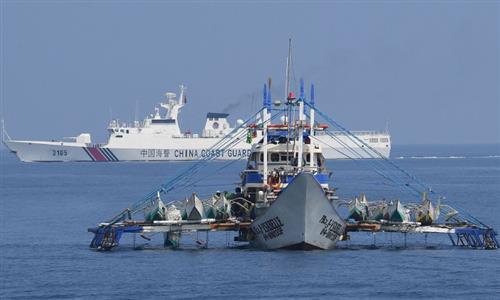PETALING JAYA: Not only is Malaysia suffering from a “scamdemic” with citizens continuing to fall victim to job scams, but the country is also believed to be the location of scam centres with international syndicates having set up operations here, according to a United Nations report.
Coined by the United Nations Office on Drugs and Crime (UNODC) after the Covid-19 pandemic in 2021, the term “scamdemic” has gained traction as scam cases surge, particularly in countries like Cambodia, Myanmar and Laos.
In its latest policy brief, UNODC says international NGOs have identified over 40 nationalities of trafficking victims in scam parks in South-East Asia, including Malaysians.
These scam parks, a gathering of criminal organisations specialising in financial fraud and human trafficking, are known to deploy operatives who excel at running job scams, among others.
ALSO READ : ‘Greed and risky mindset lead to more victims’
While there is no accurate data on the number of victims trafficked for forced criminality, it is estimated that between 10,000 and 100,000 predominantly young men and women from Asia had been trafficked and forced to commit online scams and fraud, says the report.
The actual number of Malaysians who have fallen victim to job scams is unknown, although the Malaysian International Humanitarian Organisation, an NGO that assists in rescuing Malaysians from such scams, claims that there are at least 1,000 Malaysians in Myanmar alone.
At the recent parliament sitting, Deputy Foreign Minister Datuk Mohamad Alamin said 518 Malaysian victims of job scam syndicates had been rescued as of Nov 3, and that the ministry is identifying another 26 in Laukkaing, Myanmar.
In the same policy brief, UNODC also suggests that scam parks exist in Malaysia, following reports from trafficking victims who had escaped over the last three years. However, the report does not provide details on the existence of the scam parks.
“Since early 2021, an increasing number of stories started to emerge of trafficking victims escaping from scam compounds in countries such as Cambodia, Laos and Myanmar and even Malaysia,” says the report.
UNODC says concerns over citizens being trafficked and severely mistreated, primarily in scam compounds in the Golden Triangle (the area in which the borders of Myanmar, Thailand, and Laos meet), were also expressed to the body and other UN agencies by several governments in the region.
UNODC says the victims related similar stories of how they were lured by lucrative job offers, only to find themselves forced into modern-day slavery to work as scammers themselves. They tend to be working in casino complexes or highly guarded buildings.
“After travelling to or within the destination country, they were confined to large casino or hotel complexes, or other secure buildings tailored to harbour or confine victims, where they were forced, for up to 15 hours a day, to conduct online scams.
“These online scams and fraud, committed primarily by trafficked persons under duress, have defrauded thousands of scam victims around the world of, on average, US$169,000 per victim,” says the report.
Universiti Tunku Abdul Rahman’s Tun Tan Cheng Lock Centre for Social and Policy Studies chairman Dr Chin Yee Mun said it can be concluded that Malaysia is indeed experiencing a “scamdemic” following recent findings from a survey carried out by a group of academics on Malaysians’ awareness of the matter.
“Firstly, our survey shows that nearly 40% of the respondents have encountered scams, and about the same percentage have someone in their social circle who had undergone similar experiences,” he said.
“Secondly, we have similar experience or have someone in our social circle who encountered scammers or has been scammed.”
Universiti Teknologi Mara Perlis’ Dr Azhar Abdul Rahman said that although the number of Malaysians who remain trapped in scam parks is uncertain, there may be many more, judging from the continuous reports of rescued victims.
“These scammers are always prepared with their plans to entice the gullible with (jobs that offer) easy access to wealth,” said Azhar, who was part of the team that carried out the survey.
But Malaysians are not new to experiencing job scams, said crime analyst Kamal Affandi Hashim.
“Malaysia has long been suffering from this ‘scamdemic’. And Malaysia is not alone as the whole world is facing this problem.
“The only difference now is that this matter is being put under the spotlight. The scammers are also technologically savvy and sophisticated in reaching out to potential victims,” he said.
Source link
Related:
The grass is not always greener on the other side

Roshaidi (right) and his friend refused to work as scammers as told by the syndicate
Related stories:
Scam jam
Resumes and regrets
So rampant, it’s become a ‘scamdemic’
‘Greed and risky mindset lead to more victims’
Scammers’ new game?
Government needs to do more against scammers
The map shows locations of known or raided scam parks, including illegal casinos, in Cambodia, Lao PDR, and Myanmar as reported by regional law enforcement authorities as of June 2023.
THEY arrive at an exotic, foreign land with hope for a new life or new love.
But what they get is despair, and some even death, as they are locked up, tortured and forced into a life of cybercrime.
This is what happened to an estimated 10,000 to 100,000 predominantly young men and women who have been conned and held captive in the “scam parks” of South-East Asia, where they are forced to commit online scams and fraud, says the United Nations Office on Drugs and Crime (UNDOC).
Calling it a “scamdemic”, UNDOC highlights in its report, Casinos, cyber fraud, and trafficking in persons for forced criminality in South-East Asia, that the huge scamming “industry” has swept across the region in the wake of Covid-19.
According to the report which was released in September, the scam parks – also known as fraud factories – are run by transnational organised crime syndicates taking advantage of the existing casino and Special Economic Zone (SEZ) infrastructure in the Golden Triangle area, namely in Cambodia, Lao PDR, Myanmar, Vietnam and Thailand.
These syndicates are believed to be gangs from mainland China, Taiwan and Hong Kong, who due to the pandemic, were forced to close down or move their illicit operations, especially illegal casinos, to less regulated spaces such as conflict-affected border areas and the SEZ, as well as to the increasingly lucrative online space.
Covid-19 had also created the perfect conditions for this scamdemic to flourish with its “toxic combination” of unemployment, lockdown isolation, and increased social media use, says UNDOC.
With millions of migrant and expatriate workers stranded during the Covid-19 lockdowns, while thousands of millions others were confined at home, the pool of easy targets for job scams and other online fraud schemes only grew. Then as the region reopened in 2021, traffickers took advantage of those who had lost their jobs because of the pandemic and were desperate for work.
UNDOC says these organised crime groups have developed and implemented a sophisticated plan to scam people, utilising the latest artificial intelligence (AI) tools, including face swapping and voice replication to bypass banking security systems.
The scam park trafficking crime is also growing into a global problem as victims come not only from across the Asean region, East Asia and South Asia, but also further afield from Africa and Latin America.
The trafficked victims in turn are forced to scam thousands worldwide, very often their own countrymen. It is estimated that these online scams have defrauded thousands worldwide of an average US$169,000 (RM789,801) per victim.
According to another UN agency, the Office of the United Nations High Commissioner for Human Rights (OHCHR), these scam parks are also seeing a new type of victims.
An OHCHR report published in August says that while trafficking cases in South-East Asia used to involve mostly victims who had lower educational qualifications and worked in low-wage jobs, the latest findings show the trend now includes those who are well-educated – many previously held professional jobs and have graduate or postgraduate degrees.
Most are also IT-savvy and multilingual, fluent especially in English. (This is so they can trick scam victims more effectively, the report says.)
Many ensnared are also from supposedly more developed nations in the region such as Singapore and Taiwan.
'
 'CLICK TO ENLARGE'
'CLICK TO ENLARGE'
OHCHR adds that while most of the trafficking victims are men, there are also women and young persons.
Luring them with the promise of stable jobs overseas, the traffickers arrange for the unknowing victims to travel to countries like Thailand and Myanmar, before smuggling them across the borders to Laos and Cambodia.
They are then taken to scam parks, which are secure buildings tailored to confine victims and operate these online scams, including large casinos and hotel complexes.
Once inside the scam parks, some of which are fenced with barbed wire, the victims’ passports are confiscated, and they are forced to work as scammers for up to 15 hours or more a day.
Those who try to escape are often beaten before being forced back to work.
There have been reports of trafficking victims being sold and moved from one scam park to another.
While thousands of victims have escaped, been rescued, and returned to their home country, say the UN agencies, overall, the problem is not abating, with new scam compounds being built and existing scam compounds expanding in size and geographical scope.
 A submarine attached to a naval submarine flotilla under the PLA Northern Theater Command steams in the sea during a training exercise recently in waters of the Yellow Sea. Photo: China Military
A submarine attached to a naval submarine flotilla under the PLA Northern Theater Command steams in the sea during a training exercise recently in waters of the Yellow Sea. Photo: China Military












